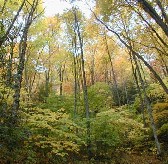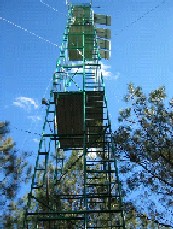Field Trips
Welcome | Background | Themes | Program | Invited Speakers | Field Trips
Organizing Committee | Sponsors | Venue and Lodging
Registration | Abstract Submissions | Conference and Trip Photos
Coweeta Hydrologic Lab: a Long-Term Ecological Research Site (LTER)

The Coweeta watershed, representing one of world’s oldest forest hydrology research sites, contains 5600 acres of mountain land divided into distinct small drainages. The steep slopes, varying in elevation from 2250 to 5230 feet above sea level, are covered with dense forests typical of the southern Appalachian Mountains. Ecohydrological measurements are used to show how disturbances to the watershed change stream characteristics. Learn more at http://coweeta.ecology.uga.edu or http://www.srs.fs.usda.gov/coweeta/
Carbon and Water Eddy Flux Studies

Coastal plain forests remain one of the few uncharacterized ecosystems in the otherwise dense Ameriflux network of eddy covariance sites that measure energy, carbon, and water fluxes. Many coastal forests are characterized by deep organic soils with carbon pools up to an order of magnitude greater than uplands forests. As a result of drainage during site preparation, these soils may be vulnerable to decomposition, particularly in a warming climate with altered precipitation regimes. On the other hand, sea level rise, which is already affecting these coastal forests, may modulate their hydrologic regime as well as carbon balance. Currently, there are large uncertainties about the role of these ecosystems in the global carbon cycle.
The USDA Forest Service has established two study sites in intensively managed loblolly pine plantations located on the lower coastal plain in Weyerhaeuser’s Parker Tract to elucidate the mechanisms that regulate the variation in the magnitude of carbon fluxes and their relationship to hydrology. Our data indicate that intensively managed commercial timber plantations can sequester over 8 tons of carbon per hectare per year, but this sink strength is very sensitive to hydrologic patterns during any given year. Participants on this field trip toured 5-and 17-year old unthinned loblolly pine plantations and learned about the eddy-flux, micrometeorology, biomass, tree sapflow, soil respiration, and water table measurements being collected to analyze carbon, water, and energy fluxes.



